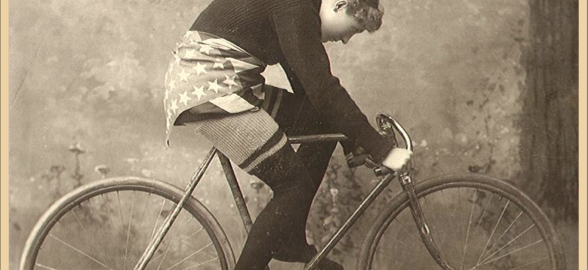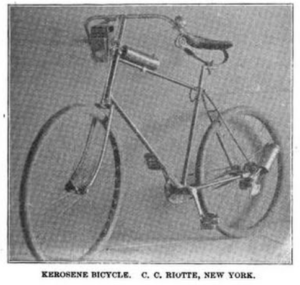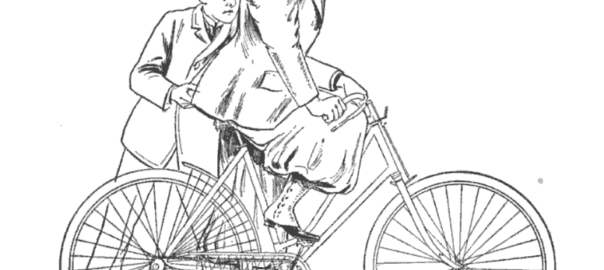Women’s Six Day Bicycle Races

I’m more and more convinced that my new heroine will be a bicycle racer, so I’ve been looking up about women’s racing at the end of the nineteenth century. There is, in fact, a book on the subject of women in six-day bicycle races — but it doesn’t come out until October 2018! I even sent an email to the author in hopes of snagging an early review copy, but no dice. He did email me a copy of an article he’s recently written for Michigan History magazine, which was helpful in that it explains the women’s races were sprints, compared to the men’s six-day races.
For male cyclists, the six-day race was just that: riding as long as you were awake for six days. It was an endurance event to the extreme. For the women, it was apparently an hour in the afternoon and two hours in the evening, which allowed their races to focus on speed and coincidentally be more exciting for spectators.
Understanding how the races worked is one part of the puzzle, but I’m still missing info. Namely, who was racing, when, and where? There’s a bit of a list at sixday.org and another at 6dayracing.ca, but the women’s information is scanty and earlier than I’m looking for. So I’m combing through the Library of Congress’s online newspaper database and making a similar list of women in six day races. And if I’m doing the work already, I might as well share it.
I started by searching for Tillie Anderson, easily the era’s most famous female racer (she’s even earned herself a children’s book) and then doing secondary searches on her named competitors. I got to about forty races and over fifty named competitors. Because the races last for so long, it’s hard to tell quickly if a news report is talking about a new race or is a slightly delayed account of a previous race. The list may therefore contract as well as expand. It’s a Google spreadsheet, so you can click here to view it. I’ve added in some notes as I found interesting tidbits in the new articles that were longer than just race results: dogs on the track, riots, and wardrobe malfunctions are a few of the newsworthy mishaps!

